A-Ma Temple & Barra Hill History Adventure
Thursday, January 26, 2012
 Macau Peninsula, Macau, China
Macau Peninsula, Macau, China
Hey Hey and a Big G'Day toya,
So comes, Lisa Jane’s and my last day in Macau.
Sadly it is also our last day with my iSister and amazing Kungfu Ken.
Unlike many of my previous seven years 'Summer & Winter Beers N Noodles Adventures’ where I have usually travelled alone throughout different rural parts of China, this time I got to actually got to meet someone that has become a close friend and that I welcomed into my life as my iSister. Both Kungfu Ken and CristinaW put aside their Chinese New Year to spend time with us and show us ‘their’ Macau and believe me, those who come here for a single day from Hong Kong are missing out on one of THE most beautiful parts of China that I have ever travelled.
Macau my friends is not for a fleeting visit.
It is so much more than worthy of an entire weeks relaxing visit.
Like I said, Macau is one of the most beautiful places that I have ever been too and for what both Kungfu Ken and CristinaW have done, there is no words that can express our heartfelt thanks for their time and friendship. I’ve never really sat back and thought about where I’d like to live when I am old, retired and more silly than I am now as I naturally always thought it would be Australia, but after my visit to Macau I am putting it as my first destination to kick back and relax with either a worldly brew or a steaming hot pot of tea.
Macau my friends, has captured both my heart and soul!
Over history Macau has been an important gateway through which western civilization entered China; for hundreds of years this piece of land has nurtured a symbiosis of cultural exchange, shaping the unique identity of Macau. The historic centre of Macau is living testimony to the assimilation and continued co-existence of eastern and western cultures over a unique chapter in history. It stands witness to successful East-West cultural pluralism, reflecting china’s persistent openness to the influx of western cultural concepts throughout that historic timeframe. It is the fruit of mutual respect and tolerance between different cultures and civilizations. Its value lies not only in the completeness of the architectural and urban infrastructures, but also in the fact that these have retained their original function and spirit to the present day.
The historic centre of Macau is the product of over four hundred years of cultural exchange between the western world and the Chinese civilization. The architectural heritage, predominantly European in nature, stands in the midst of traditional Chinese architecture in the historic settlement providing contrast. It is the oldest, the most compete and consolidated array of European architectural legacy standing intact in Chinese territory.
The settlement by Portuguese navigators, in the mid 16th century laid the basis for nearly five centuries of uninterrupted contact between East and the West. The origins of Macau’s development into an international trading port make it the single most consistent example of cultural interchange between Europe and Asia. For almost three centuries, until the colonization of Hong Kong in 1842, Macau’s strategic location at the mouth of the Pearl River meant that it retained a unique position in the South China Sea, serving as the hub in a complex network of maritime trade that brought tremendous wealth and a constant flow of people in to the enclave.
People of different nationalities came, bringing their own cultural traditions and professions, permeating the life of the city as can be seen in both intangible and tangible influences.
During the late Ming and early Qing Dynasties, missionaries from different European religious orders such as the Jesuits, the Dominicans, the Augustinians and the Franciscans entered China through Macau, engaging in missionary work and bringing with them a certain cultural influence. They introduced western concepts of social welfare and founded the first western style hospitals, dispensaries, orphanages and charitable organizations. They brought in the first movable type printing press to be used on Chinese soil and published the first paper in a foreign language. As Macao was the base for the Jesuit Mission in China and other parts of East Asia, Jesuit priests entering into China service would always come first to Macau where, at St Paul’s College they would be trained in the Chinese language together with other areas of Chinese knowledge, including philosophy and comparative religion. Other later achievements of Christian missionaries in Macau include the production of the first English-Chinese Dictionary and the first Chinese translation of the bible.
The worship of A-Ma originated with the folk beliefs of fishermen living along the coast of South China. Due to Macau’s special position in channeling cultural exchange between East and West, A-Ma Temple has played a prominent role as the earliest reference to A-Ma worship.
The name Macau is derived from the name of the goddess A-Ma, also known as Tin Hau.
The A-Ma Temple
At the southwestern tip of Macau Peninsula stands the A-Ma Temple; many people believe that when the Protugese first arrived on this spot and asked the name of the place, they were told ‘A-Ma Gau’ (Bay of A-Ma). According to legend, A-Ma, a poor girl looking for passage to Canton was turned away by wealthy junk owners. Instead a poor fisherman took her on board. Shortly after a storm blew up, wrecking all the junks but leaving the fishing boat unscathed. When it returned to the Inner Harbour, A-Ma walked to the top of the nearby Barra Hill and, in glowing aura of light, ascended to heaven. In her honour, the fisherman built a temple on the spot where they landed.
In modern Cantonese, Macau is Ou Mun, meaning ‘gateway to the bay’.
The A-Ma temple already existed before the city of Macau came into being. It consists of the Gate Pavilion, the Memorial Arch, the Prayer Hall, the Hall of Benevolence, the Hall of Guanyin, and Zhengjiao Chanlin (a Buddhist pavilion). The variety of pavilions dedicated to the worship of different deities in a single complex make A-Ma temple an exemplary representation of Chinese culture inspired by Confucianism, Taoism, Buddhism and multiple folk beliefs.
Moorish Barracks
Macau was just a link in the chain that was the Portuguese Empire, stretching from Goa, to Malacca to Macau. In the late 1800’s the Portuguese dispatched a garrison of Indian police to the territory, housing them in a specially designed, Moorish inspired barracks. The building moulds together Portuguese, Indian and Moorish influences, the latter best seen in the horseshoe arches that hold the barracks wide verandahs and the turreted roof. The building is now home to the city’s Maritime Authorities and is off limits, but you are free to wander around the exterior.
The Maritime Museum
If the history of Macau is really connected to the sea, there is no better place for the Maritime Museum that the square of the Barra Pagoda, dedicated to the Taoist goddess A-Ma, the protector of fishermen and also believed to be the place where the Portuguese landed and what better place to locate the Maritime Museum which is also built in the shape of a sailing ship anchored in the waters of the Inner Harbour.
Museum of the Holy House of Mercy of Macau
The Holy House of Mercy Museum was opened in 2001, it comprises of an invaluable collection of Macau’s Catholic relics, some of them dating back to the 16th century, bearing testimony to the history of Western culture that was introduced to China through Macau. Here lie items connected to the history of the Holy House itself, with natural emphasis for the original manuscript of the Commitment of the Macau Holy House of Mercy handwritten and dated in 1662, believed to be the oldest in the Holy House of Mercy’s archives, and institution founded some years earlier, in 1569 by the Bishop of Macau. Other pieces of secular history include the skull of Belchior Carneiro and the cross he was buried with along with oil portrait dating from the 18th century and the bronze bell from the old Rafael Hospital.
Chapel of Our Lady of Penha
The first chapel was founded in 1622 by the crew and passengers of a ship which had narrowly escaped capture by the Dutch. The chapel served as a point of pilgrimage for sailors embarking on a hazardous voyage.
Chapel of St James
This tiny chapel rebuilt in 1740 in the Barra Fort on the top of the peninsula is now an architectural part of the Portuguese Inn, or Pousada which has been established on the foundations of the fort. It is a charming sanctuary with a statue of the saint and blue and white tiles depicting Our Lady of Fatima and the saintly Queen Isabel. St James is the military protector of Macau, and legend tells that he frequently goes on patrol around the city, and at times, his boots are found to be muddy. A soldier used to be given the duty of cleaning the boots of the statue.
The Macau Museum
Opened in 1998, the Macau Museum is located in the Mount Fortress built by the Jesuits in the early 17th century. For a long time, the fortress was the city’s principal military defense structure where public access was restricted. In 1965 the fortress was converted into the Meteorological Services and later opened to the public and offers a panoramic view of the city along with the ruins of St Paul’s. The Macau Museum is a historical and cultural museum with a vast number of objects of great historical value, which shows the way of life and culture of the various communities which have inhabited the city over the ages.
St Lawrence’s
Today the most fashionable church in Macau, St Lawrence’s was first built in the 1560’s, replaced by taipa in 1618 and reconstructed on stone in 1801. Further renovations took place throughout the 19th century. The church is an imposing structure, standing in a garden filled with palm trees. It can be approached from the rear or by way of a grand staircase and ornamental gate. Painted in cream and white, St Lawarence’s Church has twin towers, one of which was once an ecclesiastic prison and a fine Chinese tile roof. The interior is richly decorated and it has a magnificent wooden ceiling painted with white and gold beams, from which hang elegant chandeliers. The high alter contains a handsome figure of St Lawrence in gorgeous vestments.
Dom Pedro V Theatre
Unable to understand Cantonese, Macau’s Portuguese population spent years in the cultural wilderness, with only the local library and mass on a Sunday to keep them distracted. More lively entertainment arrived in 1860 via the Dom Pedro Theatre, which included a bar, restaurant and pool room along with its auditorium. Restored after years of disuse, the theatre has classic colonial arcades surrounding it and a grand, three arched entrance, all swathed in a somewhat sickly green pastel color, bordered by white trimming.
Built in 1860 as the first western style theatre in China, with a seating capacity of three hundred, it has survived as a highly significant cultural landmark in the context of the local Macanese community and remains a venue for important public events and celebrations.
St Augustine’s Square
St Augustine’s Square gathers various classified buildings, such as St Augustine’s Church, Dom Pedro V Theatre, St Joseph’s Seminary and Sir Robert Ho Tung Library. The cobblestone pavement unifies the area and reflects a traditionally Portuguese streetscape.
Sir Robert Ho Tung Library
This building was constructed before 1894 and was originally the residence of Dona Carolina Cunha. Hong Kong businessman Sir Robert Ho Tung purchased it in 1918, using it as his retreat. He passed away in 1955 and in accordance with his Will, the building was presented to the Macau government for conversion into a public library.
St Joseph’s Siminary and Church
This church was opened in 1758 as part of the Jesuit seminary of St Joseph. It was the principal base for the missionary work implemented in China, Japan and around the region. St Joseph’s Seminary taught an acadenmic curriculum equivalent to that of a university and in 1800 the Portuguese Queen Dona Maria I conferred on it the royal title of House of the Mission Congregation. Located on a hill, with twin brick roofed towers, it was a famous landmark that was often a subject for artists. It is laid out in cruciform shape, with a high domed ceiling.
Mandarin’s House
Built before 1869, this was the traditional Chinese residential compound home of prominent Chinese literary figure Zheng Guangying. It is a traditional Chinese compound consisting of several courtyard houses, displaying a mix of Chinese and Western detailing, such as grey bricks against arched ornamentations and Chinese timber lattice windows against mother of pearl window panels of Indian origin.
Lilau Square - Largo Do Lilau
Arguably Macau’s most quintessentially Portuguese square, Largo do Lilau may lack the grandeur of Largo do Senado but the cluster of low rise, almost cottage like houses that bank the square and streets surrounding it, decked in pastel tones and featuring wooden shutters, are an authentic slice of small town Portugal in the heart of Macau. It’s said that if you drink from the fountain at the heart of the square, you’re sure to return to Macau.
Fisherman’s Wharf
Set on the waterfront, next to the Hong Kong-Macau ferry, there is no doubting the ambition of this project which is split into a number of themed areas, recreating architecture from Old England, Rome, 18th century Portugal and others, the buildings may be a little unconvincing but along with the cobblestone streets and South China Sea they certainly make for an atmospheric setting.
Fisherman’s Wharf Macau was also originally intended to give Macau a dedicated nightlife and dining district and here the attraction is moderately more successful. If you don’t like Cantonese or Portuguese food, finding grub in Macau can be a challenge, so the selection of American, BBQ and International restaurants on the Wharf is a welcome addition. Most boast terraces and some have sea views, both of which can be hard to find in a city that shuns dining al-fresco.
Macau’s Fusion Food
While Macau is renowned for its Chinese cuisine (especially dim sum), most people come here to sample Portuguese and Macanese food. Browse a typical Macanese menu and you’ll find an enticing stew of influences from Chinese and Asian cuisines, as well as from those of former Portuguese colonies in Africa and India. Coconut, tamarind, chili, jiggery and shrimp paste can all feature. One of the most famous Macanese specialty’s is Galionha Africana (African Chicken), made with coconut, garlic and chilies. Apart from cod, there’s plenty of other fish and seafood, shrimp, crab, squid and white fish. Sole is a Macanese delicacy and the former Portuguese enclave of Goa contributes delicious spicy prawns.
Other Macanese favorites include casquinha (stuffed crab), porco balichao tamarind (pork cooked with tamarind and shrimp paste), minchi (minced beef or pork with potatoes, onions and spices), and baked rice dishes made with cod, prawns or crab. Macanese desserts include pudlim, which is basically crème caramel, and serradura, a calorie rich ‘sawdust’ pudding made with crushed biscuits, cream and condensed milk.
Beers N Noodles toya…..shane
___________________________________________________________
The soundtrack to this entry was by Melbourne's 'You Am I'
The album was ‘Snake Tide'
____________________________________________________________
Other Entries

 Macau Peninsula, Macau, China
Macau Peninsula, Macau, China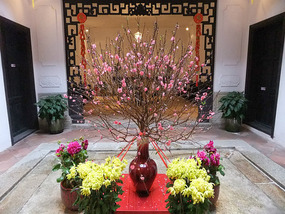
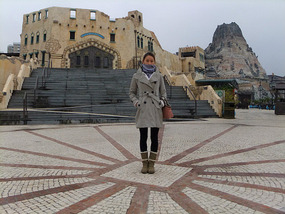
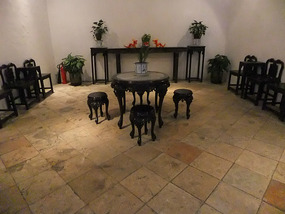
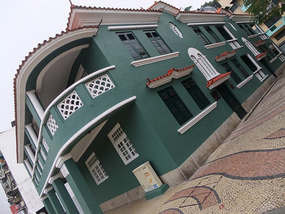
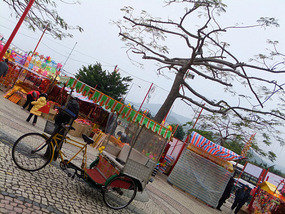
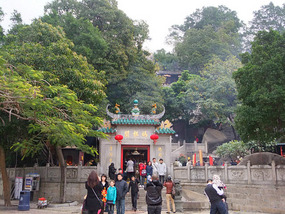
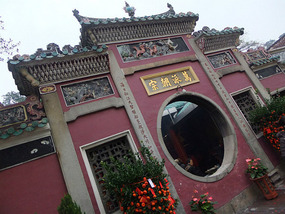
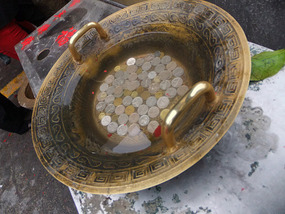
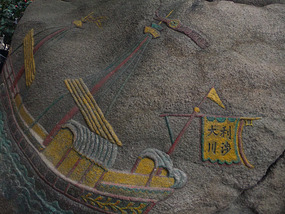
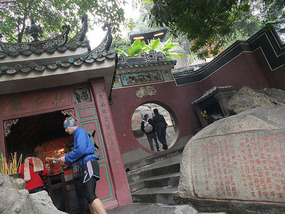
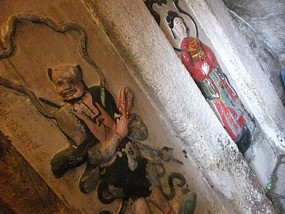
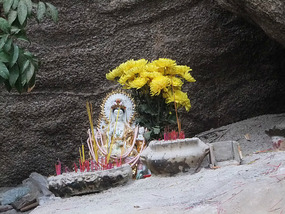
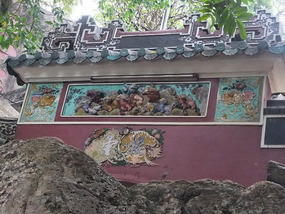
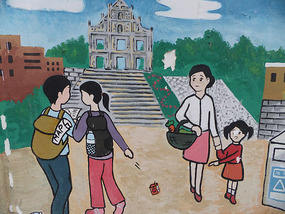
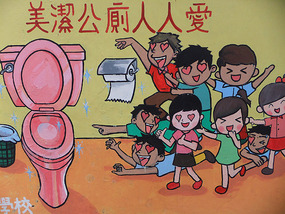
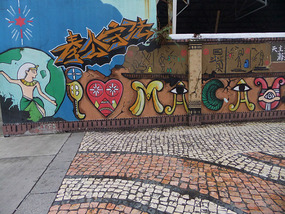
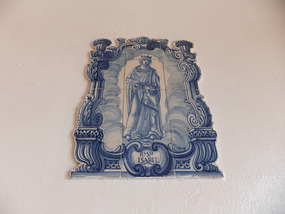
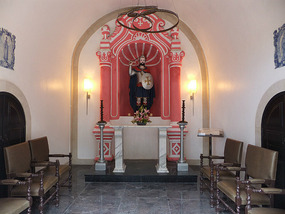
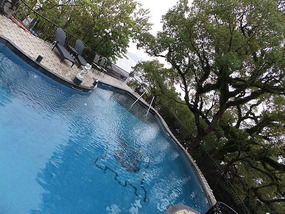
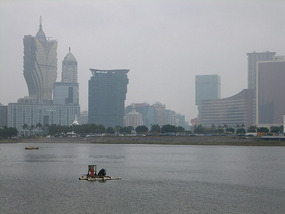
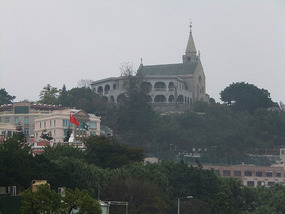
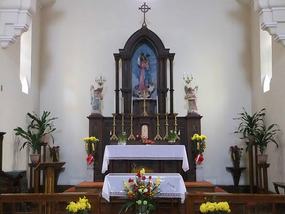
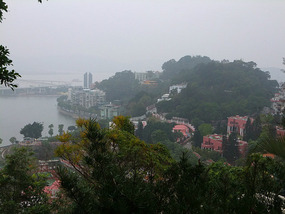
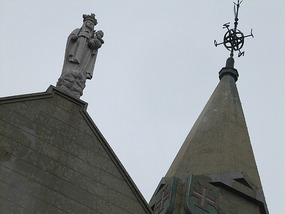
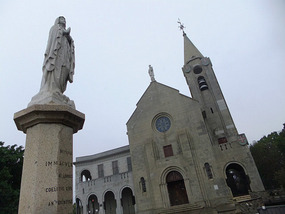
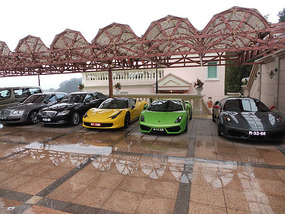
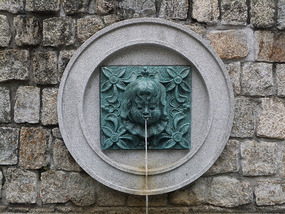
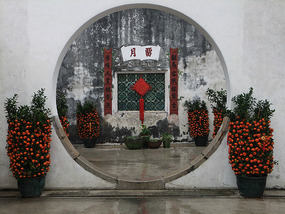
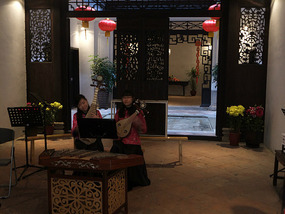
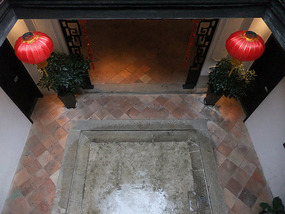
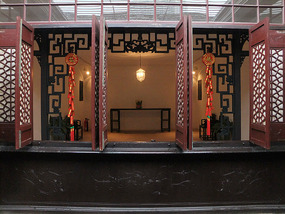

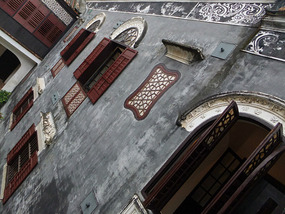
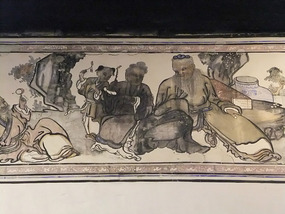
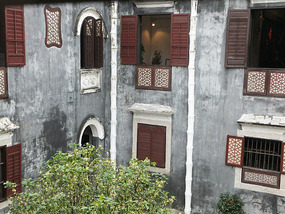
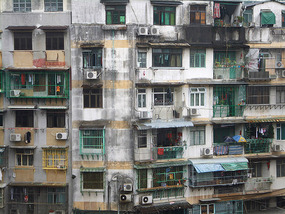
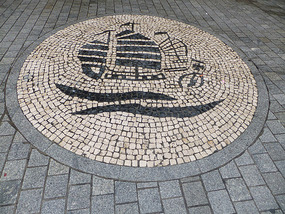
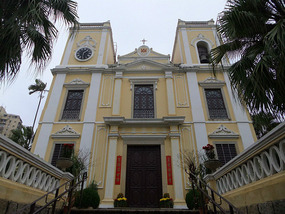
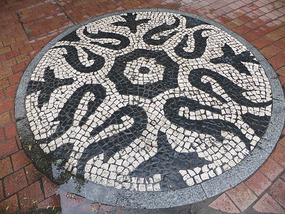
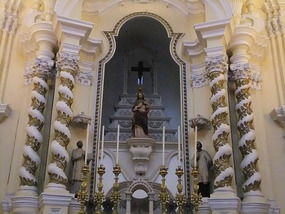
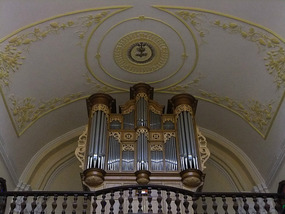
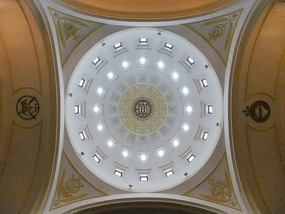

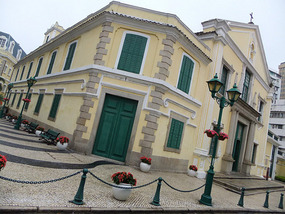

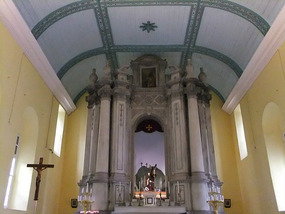
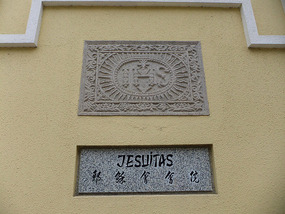
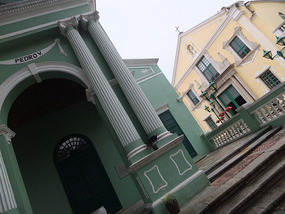
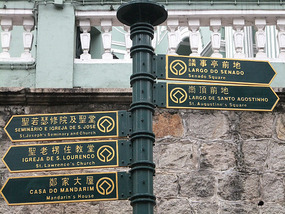
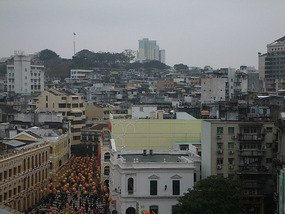
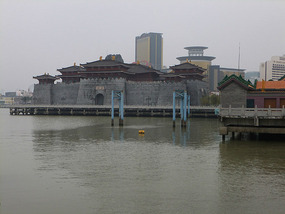
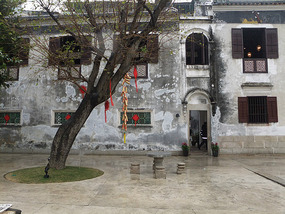
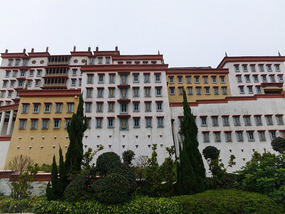
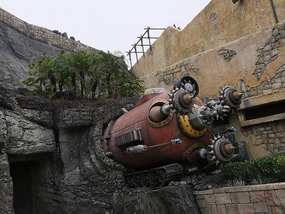
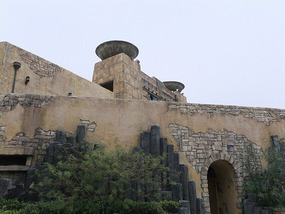
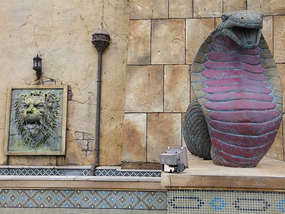
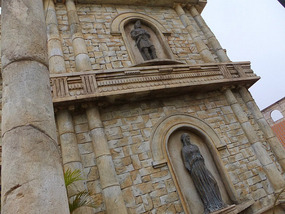
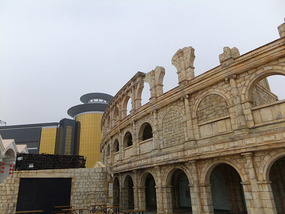
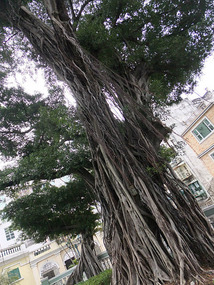
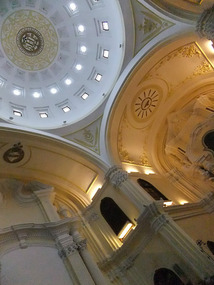

2025-05-22